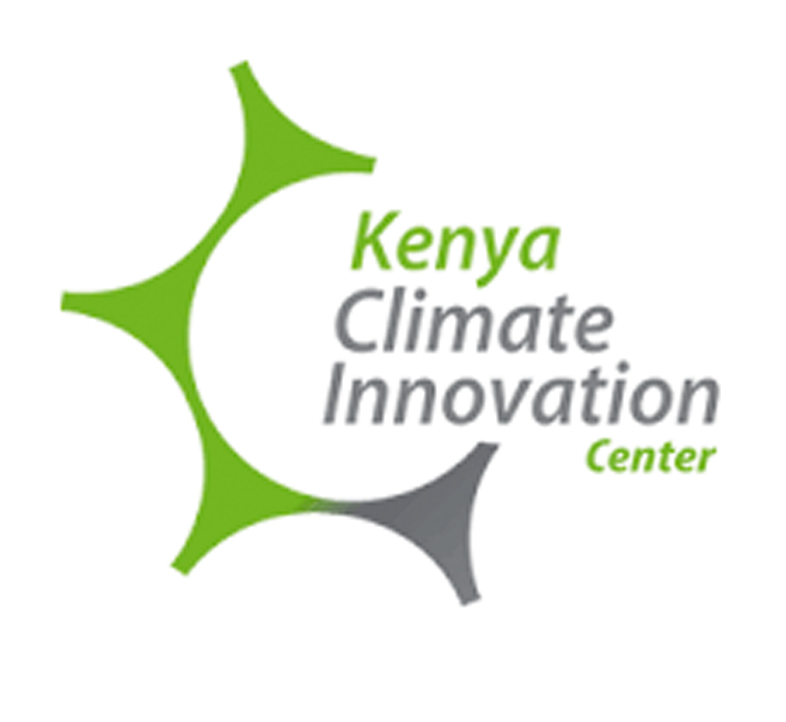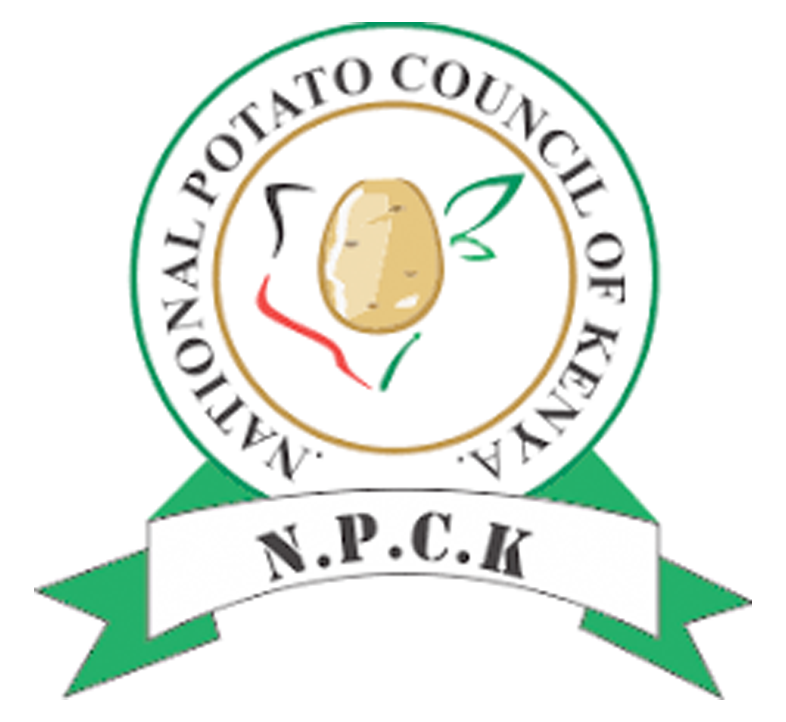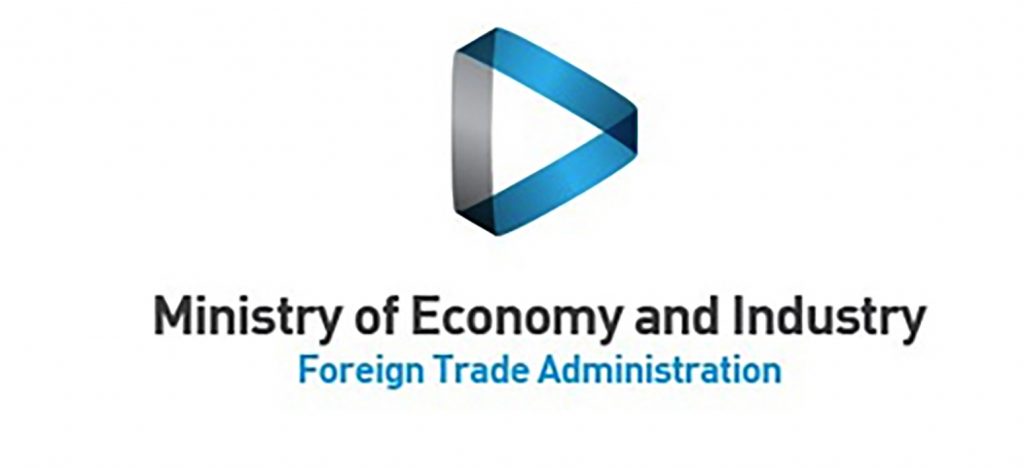Our Services

AgriSoko App
This App helps small holder potato produce quality potato that which ensures constant market, this ensures shortening of the value chain. It also helps them form cooperative groups which makes them have access to input providers and any other services in the potato value chain

Educating through our Digital Platforms

Agricultural Tours
Agri Innovation Hub together with Ethics and Integrity Institute in partnership with State of Israel, Ministry of Economy and Industry organize Agricultural Study Missions to Israel. This missions enable our farmers, government officials, agronomists learn, share and network with leading industry players in Israel. Some of the institutions we have visited includes Eshet Eilon, Afi Milk and Volcani Partnership. Through these missions, our farmers are empowered with knowledge on how to improve their production and take their agribusiness to the next level. Our next tour will be between the 16th to 23rd September 2022. To join us call Grace on 0721258452
From $1500
Pictorial
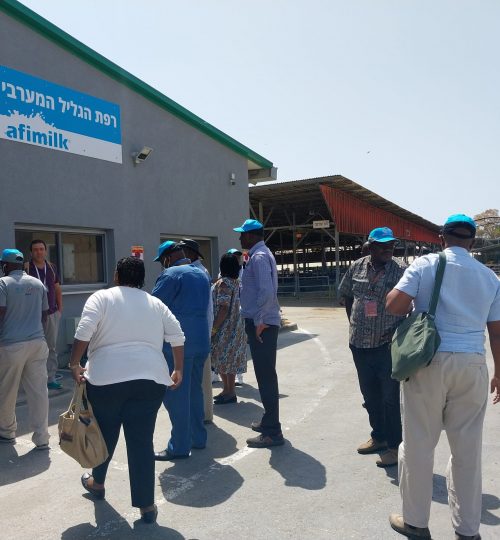




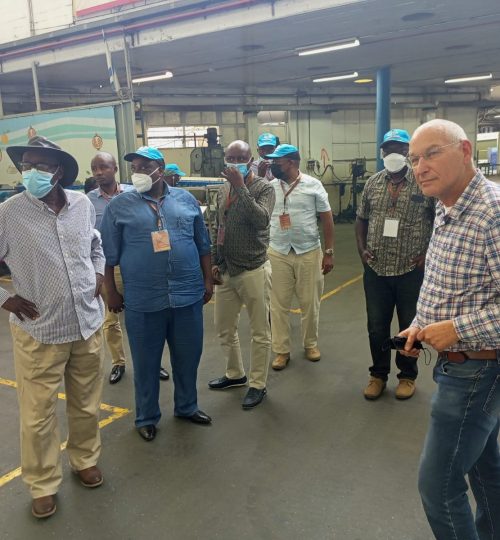

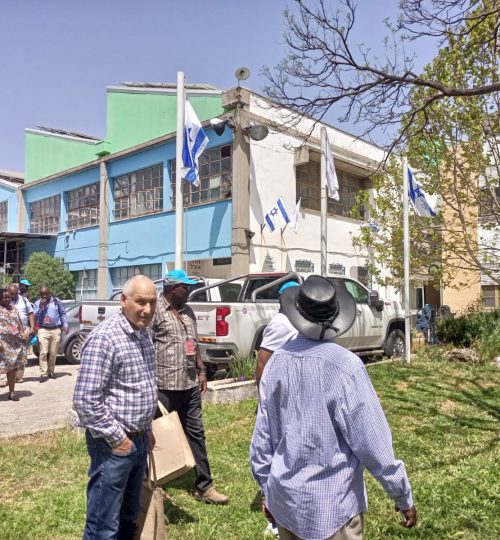
Agricultural Study Tour to Israel
Our delegation toured
1. The Volcani Center, https://www.vipartnerships.org
A visit to Volcani International Partnerships, an NGO set up in 1926 reveals the success story of Israel.
The Volcani Center’s overriding mission has been to serve the needs of the Israeli farmer and Israeli agriculture. This is built into the promotion structure and Volcani’s scientists are not only evaluated on the quality of their research but also how applicable their results are, and the extent to which they contribute to agriculture development. For example, researchers are measured based on variables such as how many varieties are given to farmers; how much they contribute to protect plants from diseases and gains from increased water efficiency. As a result, there is an overwhelming focus on applied research and scientists commonly respond to specific demands from farmers.
The Volcani Center comprises one main campus and two regional research centers – one in the north and one in the south. Today there are 200 scientists working in a system built around six research disciplines: plant sciences, soil and water, post-harvest, plant protection, animal sciences and agricultural engineering. This structure is important and enables Volcani to take a multidisciplinary approach to solve problems (more on this in the next chapter). This agricultural research system is also supported by eight local R&D centers whose role is to take the innovations from Volcani and adapt them for the local context. These local centers are run by the regional councils as part of the local authority, but Volcani appoints a lead scientist to oversee each center. Volcani also has a dedicated unit for royalties and technology transfer.
How Israel became a world leader in agriculture and water
Israel has limitations and does not present sensible place for agriculture. 30% is nearly desert or considered semi-arid or arid and volcanic poor quality soil. There is a shortage of natural water resources, a scarcity of precipitation and Israel is far from key export markets. Most early immigrants tasked with developing the land had no prior farming experience and on arrival faced a barren and swampy landscape.
Despite such overwhelming challenges, in its short history Israel not only managed to create a remarkable agricultural transformation, securing national food security and establishing thriving export industries, but also emerged as a global leader in agriculture and water management. How did it succeed?
Unsurprisingly, Israel’s agricultural success against all reasonable odds has generated great interest.
Many government representatives of developing countries visit Israel in search of advice and support, asking, “what can we (Africa) learn from Israel’s story and what can Israel offer?”
Israel is a unique country whose history, politics and geography shaped the mindset of its people and its leaders. Nonetheless it offers many valuable insights and practical lessons. Many African nations, in particular, are still awaiting an agricultural revolution that historically has proved crucial for the development, food security and large-scale poverty reduction of advanced and fast-developing countries across the world.
Volcani through a very Israel’s Agriculture Sector
Israel is a world leader in agriculture and water management, as reflected in key statistics.
PRODUCTION ACHIEVEMENTS
- Israel records the highest productivity of cow milk in the world at 13,000 litres per cow compared to 10,000 litres in North America and 6,000 litres in Europe.
- It produces 262 tonnes of citrus fruit per hectare, compared to 243 tonnes in North America and 211 tonnes in Europe.
- Israel’s tomato yield is 300 tonnes per hectare, compared to an average of 50 tonnes per hectare worldwide.
- And it is a world leader in the production of fruit such as pomelit, pomegranates, nectarines, plums, dates, strawberries and avocados.
- The country also leads in post-harvest handling: it records 0.5 per cent of grain storage loss, compared to 20 per cent worldwide.
EXPORT STANDING
- In 2018 Israel exported $350 million worth of vegetables
- $250 million worth of dates, avocados and mangoes
- $215 million worth of fruit juices
- $193 million worth of citrus fruits
- $188 million worth of processed food
- $151 million worth of seeds
SEMI-ARID AND ARID AGRICULTURE
Realising a flourishing agricultural sector in desert conditions and reversing trends of desertification is one of Israel’s greatest agricultural achievements. More than 40 per cent of the country’s vegetables and field crops are grown in the desert. The vast majority of exported melons – some 90 per cent – are grown in the Arava (the Jordan Valley desert).
The desert is also home to fish farms, olive groves, vineyards, date palms and crops for alternative industries. One such example is jojoba. Israel’s desert is now the biggest producer and distributor of jojoba, a crop that produces oil for the cosmetic market. With an average harvest of 4,500kg of seeds per hectare, Israel’s jojoba accounts for nearly 50 per cent of overall global production.9
OVERCOMING WATER SHORTAGES
Israel has only 90 cubic metres of internal renewable water per capita annually, compared to 1,300 in Germany, 2,200 in the United Kingdom and 8,700 in the United States. However, Israel is now a world leader in water management for domestic, agricultural and industrial purposes.
Elements that laid the foundations for Israel’s agricultural transformation:
1. Ideology and Consequent Embrace of Agriculture as a National Mission
2. Israeli Pioneer Mindset
3. Historical Inheritance
THE EMBRACE OF AGRICULTURE AS AN IDEOLOGICAL MISSION
The Jewish people were originally farmers. The Bible and Jewish calendar reveal how Jewish theology is tied inextricably to agriculture and the land; from Biblical farmers Cain and Abel, to the Jewish holidays that celebrate the first fruits and agricultural harvests of each season. Inspired by strong socialist impulses from Russia, they sought to reestablish the Jewish nation in the Land of Israel and most importantly, to reclaim the status of the Jewish farmer by embracing agriculture as a national mission. So strong was this philosophy that it galvanised an intellectual cadre of young European immigrants with no prior farming experience to immigrate to the harshest of environments and develop the land. They believed there was no higher aspiration.
This goes a long way to explain the perseverance displayed by the early pioneers, the overwhelming commitment of Israel’s political leaders to agricultural development and the socialist elements of Israel’s nascent population. Specifically, it also explains two key aspects of Israeli agriculture: collective farms – the kibbutzim19 and the institutional effort to study agricultural development.
PIONEER MINDSET
As the pioneering immigrants arrived in Palestine they were met by harsh and unfamiliar conditions. Parts of Israel’s coastal plain and the upper Jordan Valley were swampy, the Judaean mountains were rocky and the south was arid at best, desert at Arabs, and by 1950 literacy among Jewish people in Israel was 100 per cent compared to just three per cent among Arab women. Yet despite these colonial advantages, the huge investment and the dedication of Israel’s early pioneers, Israel started from a difficult place.
These underlying elements of Israeli agriculture set the foundations for the six key factors that enabled Israel to succeed:
1. Strong leadership and government commitment to agriculture
2. Effective government
3. Innovation: approach to problem solving
4. Farmer organisation
5. Market-led approach
6. Support from abroad
The remainder of this report focuses on each of these in turn.
It is not impossible until it is impossible
Israeli’s visible strategies for success
1. EXTENSION SERVICES
Israel’s extension service was officially established as a professional service in 1955. There was a clear understanding that to achieve Israel’s mission things had to be done differently. The government knew that the pioneers needed training and support,
otherwise they would likely leave the settlements due to the harsh conditions and the Israeli project would fail. So the best performing farmers were engaged as extension workers to teach others. Ben-Gurion encouraged the second generation of the pioneers of moshavim to become counselors to new communities.
The government made extension a priority and committed the funding. As a result of such strong government support, Israel has a relatively high number of extension workers. In the 1950s and 1960s Israel had one extension worker for every 50 to 80 farmers. Today, this ratio is lower: Israel’s Extension Service is comprised of 136 people, with two to five consultant specialists per crop, serving approximately 15,000 farmers, a ratio of around one worker for every 110 farmers. By comparison, in many African countries this ratio stands at one per 3,000 farmers.
Israel’s Extension Service has several other characteristics that fostered its success:
• Specialisation
• Empowered Extension Workers
• Close Contact with Farmers
• Collaboration and Messaging
• Connection to Research
2. WATER MANAGEMENT
Another element of success for the Israeli Agriculture sector is water management. Ben-Gurion (Founder of state of Israel and first Prime Minister) initiated major investment in the water sector in 1952, another major reform he introduced was the Water Law of 1959. This defined water resources – including drainage water - and made them public. This has proved essential in distributing water resources efficiently across sectors.
This has been the key to success in Israel’s water sector and allowed for long-term strategic decisions to be taken over the years. For example, farmers in the desert region had started to use saline water for their cotton and vegetables. They had no alternative. Therefore, the government took the decision to set up a special budget to research how crops could use effluent water. Today most of Israel’s agriculture uses effluent water and Israel is a world leader in its use.
3. MINISTRY OF THE ECONOMY AND THE INNOVATION AUTHORITY
Another critical function played by the government and which underpins the agriculture sector is the investment in industry. The private sector is a key element of the success of Israel’s agriculture sector.
For example, many kibbutzim (farming communities or corperatives) invested in the plastics and packaging industry in order to supply their packing houses. A suitable packaging industry was a crucial element in the success of Israel’s agriculture sector because without it, it could not deliver its produce - whether fresh or not - in good quality to its targeted markets, both export and domestic. This is one of many examples that reflect the importance of the link between agriculture and industry in Israel. The Ministry of Economy is key to ensuring a suitable enabling environment for agribusiness.
Although set up in 2012, it’s worth flagging that the Ministry of Agriculture - like most other ministries - now includes a dedicated department for planning, economy and strategy. These departments are mandated to manage the government’s strategy for each sector. It has three long-term targets for agriculture:
1. Keep fresh agricultural produce share in line with population growth
2. Maximise efficiency
3. Keep Israel as a lead agtech nation.
4. Innovation:
Approach to Problem Solving
Israel’s innovation is central to its success in agriculture and water management. It provides solutions to problems faced by farmers and private actors along the value chain and continually develops new opportunities for the sector.
The innovation approach is rooted in Israel’s agricultural research and extension system. The institutional set up of the government in this area – the golden triangle plus private industry – serves as heart of the Israeli agricultural innovation ecosystem. This model illustrates how the needs of the farmer are the focus of all the players. It shows how challenges, ideas, knowledge and solutions are constantly communicated between all players.
Moreover, given Volcani’s connection to the Ministry of Agriculture, it also shows how the farmer has direct access to the government. Volcani is a core government agency as an arm of the Ministry of Agriculture and Volcani’s researchers lead the way working hand-in-hand with extension workers, farmers and the private sector.
This structure and interaction enable four key elements of the agricultural innovation system. First, it ensures that the innovation system works on the right problem.
Farmers can communicate their problems directly to all parties. Second, it enables the development of an appropriate solution. Volcani researchers and regional R&D centers work together on the solution, hand in hand with extension workers and farmers. Third, the model contains a built-in adaptation function through the regional R&D centers. Spread across a small, but ecologically diverse country, the regional R&D centers adapt solutions to local conditions. Fourth, the structure and interaction lay the foundation for effective dissemination and high adoption of the new innovation. Many developing nations often ask, ‘how do you convince the Israeli farmer to try a new innovation?’
5. Farmer Organisation
A further factor of Israel’s success is the organization of farmers into larger units from the outset. Most Israeli agriculture was organised through farmer cooperatives - either via the kibbutzim, the moshavim or private farmers under the Farmer’s Federation of Israel. In the 1940s and 1950s approximately 40 per cent of agriculture was through kibbutzim, 40 per cent through moshavim and 20 per cent through private agriculture. This is different in many developing countries, particularly in Africa, where few farmers are organised and even fewer in well managed farmer organizations.
Israeli economist Shaul Zaban explained why farmer cooperatives are important: “If you have many small farms growing grains, they will be in poverty all their lives. Staple food must be grown in big farms. Small holders cannot survive, unless they are focused on income and are connected to big units of production. In addition, if farmers don’t control the value chain, they will miss out on technological improvements because the traders will push their price down as far as it can go. It is important to be able to move up in the value chain and for this, the bargaining power of farmers is essential. The question is then how do you increase farmer bargaining power: you need to be in a bigger unit of activity.”
The Kibbutz is the most extreme form of cooperative. There are 284 kibbutzim in Israel today. They were funded and supported by the government who provided land, water and basic infrastructure. An equal proportion of land plots of around 3 to 6 hectares were allocated to each family, and each kibbutz had around 150 families. The land was not owned by the families, but by the kibbutz. In the early stages, each family was told what to grow and in what quantity, and each family’s produce was aggregated for the kibbutz members to sell. The income belonged to the kibbutz, as did all the assets and possessions of the families
living on the cooperative. In the early stages, it was an extreme social experiment. Today, families own their possessions, but the land remains communal.
The unit of production in the moshav is the family, not the cooperative as in the case of the kibbutz -and this often led to land sewn with the same crop being less congruous. So the kibbutzim benefited from larger-scale agriculture of the same crop. The kibbutzim also proved better at investing in alternate sources of revenue beyond agriculture, such as fuel trading, manufacturing, mining, hotels and car leasing - allowing a diversified source of revenue during a tough period. The moshavim tend to be focused solely on agriculture.
There are 440 moshavim in Israel today, and the proportion of non-cooperative farmers is small because many non-cooperative farms have been sold for real estate. Israel is a densely populated country and real estate prices are high. Over the years there has been a lot of land consolidation through a mix of the land market and policy incentives. The average farm size is now 16 hectares.
In the 1970s planning quotas ended and the kibbutz movement set up eight regional cooperative bodies. These are supported by joint assets such as regional packing houses, marketers and distributors. These regional bodies also provided financing. They fed into a national representative kibbutz entity that carried out functions such as purchasing fuel and car leasing for all the kibbutzim. This was essential to step up exports.
There are two nationwide farmer associations in Israel. The Israel Farmers Federation Association is the umbrella organisation primarily for farmers that includes kibbutzim and moshavim; while the Farmer’s Federation of Israel represents non-cooperative private farmers. The cooperatives are also part of farmer associations for key crops, such as dairy, dates and apples - and these report to the umbrella organisation (FFI). To some extent the cooperatives suffered from issues of trust, and wherever issues arose, it was success through profit and money - and the link to markets - that united members of the cooperative.
2. Eshet Elion https://eshet.co.il
Eshet Eilon has amazing immense industrial strength creating solutions
with lasting human touch. Eshet Eilon, established in 1935, provides a
full range of turnkey post harvest
solutions. Dumping systems, hot
water treatment, dirt removal, waxing and drying, sorting and grading as
well as packing. In conjunction with conveying systems, Eshet Eilon
designs and manufacturers modular sorting systems, applying the latest
available technologies insuring reliability safety and dependability.
Our turnkey solutions, developed and designed for a variety of
industries, are made to order based on our customers specific needs.
Presentations
on cutting edge innovative sorting and conveying systems for fresh
produce, conveying quality into the future Combined solutions, simple
and user friendly built to order... With a Human Touch
All of our products are designed and manufactured by Eshet Eilon, with love, care
and maximum attention to the smallest details, and reliable and
friendly technical support teams are on call at all times, keeping in
touch with our customers and providing long-term support.
Eshet Eilon turnkey solutions are in use in over 30 countries worldwide, in North
America, South America, Africa, Europe and East Asia. With tens of years
of agricultural experience and extensive and advanced technical
knowledge in post harvesting systems, Eshet Eilon’s engineers are
prepared to handle any challenge and design the most effective and
fruitful solutions.
As part of creating solutions under varying and
changing conditions, Eshet Eilkon’s experienced and creative R & D
team is very active not only in solving problems, but also in looking to
the future and the industry’s anticipated requirements as to produce
handling, automation and laborsaving innovations, as well as quality
sorting, using advanced optical and mechanical systems.
1. Eshet Speedy Roll - High Speed Roller Grader
2. Pomegranate Grader
3. Combination Grader
4. Special Washers:
5. The stainless Steel Revolution for sanitation
3. Visit to AfiMilk Dairy Kibbutz managed by https://www.afimilk.com
Afi Farm prides itself as an entity that’s creating the future of Dairy!
- Founded in 1977 at the time of SAE Afrikim in Kibbutz.
- 43 Years of innovation, 250 employees worldwide, Headquartered in Israel and operating in 52 countries
- Afi Milk offices are in 7 countries
- The Kibbutz visited had 1300 dairy cattle, 933 are milked daily
- The farm produces 12 million liters of milk annually
The farm offers cow monitoring, farm management, software and parlor automation
MASSIVE INNOVATIONS
- The first electronic milk meter in the world in 1978
- In 1981 the first use of conductivity mastitis detection
- In 1984 First Commercial heat detector – pedometer
- 1993 – 2000 the first integrated milk point controller
- 2008 first in-line milk analysis
- In 2013 First 2 way wire cow activity monitoring system
- In 2017 Afi Milk acquires Scottish company silent Herdsman, a specialist in cow sensors technology
- In 2018 Launch of Afi Farms 5.3 with Afi GO Pro mobile app
- In 2020 Afi Collar 0 integrated system for milking and cow monitoring using an advanced neck collar

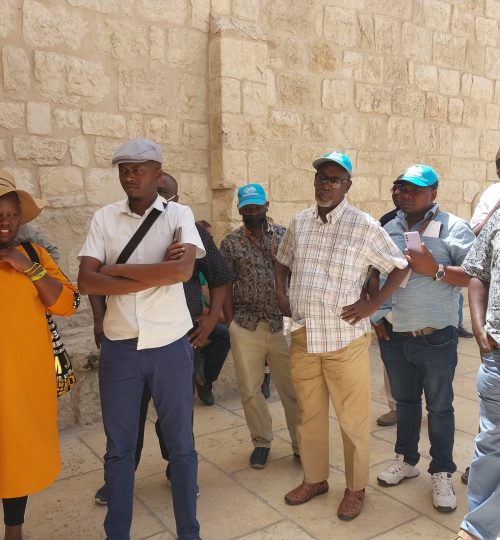

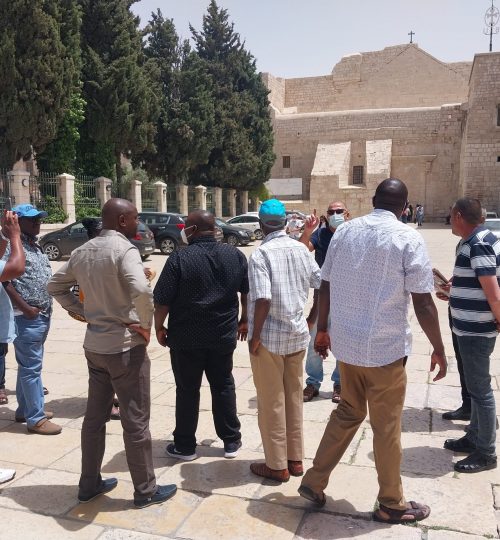
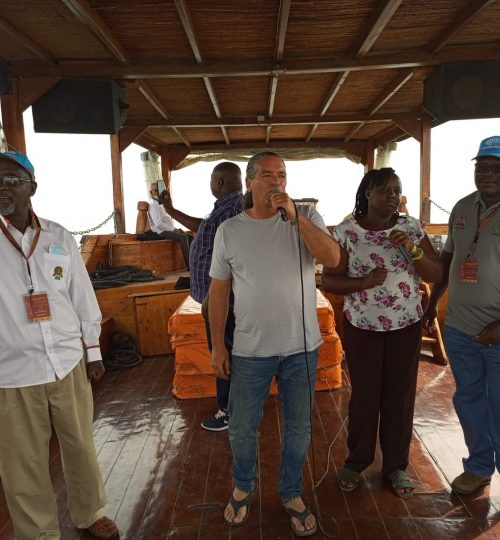
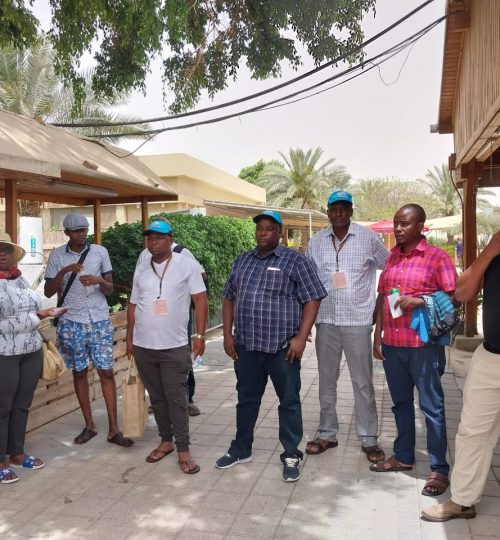
Pictorial
Religious Tour to Israel
We visited Lake Galilee, Nazareth, Jericho, Bethlehem in Palestine, Floated in the Dead Sea
Two and half hours drive from Ben Gurion International Airport is the Tiberias, built by the Son of Herod the Great, Herod Antipas. Tiberias was named after The Roma Caesar, Tiberius. Tiberias is the main city of Israel that is a major center of Tourism with a wide range of hotels and copious restaurants to match all tastes. The most inviting are those found on the lakeshore esplanade. Also on the lakeside is the thrilling Galilee encounter, that displays the history of the Galilee. Delegates enjoyed the breeze of Tiberias from King Solomon Hotel
5.2 NAZARETH – Basilica of the Annunciation
This is one of the largest churches of modern town of Nazareth. The church celebrates
the announcement brought to Mary by Angel Gabriel that she was to become the mother of Messiah. This church is considered by tradition to be part of the house of Mary where she received the announcement.
5.3 NAZARETH – Wedding Church, Cana/Kefar kana
The Ein Karem, Spring of the Vineyard is still set among the wooded hills on the outskirts of the city, and is a wonderful place to spend a peaceful day away from the hurly-burly of the busy city. Although not so known, it was here that Mary came after the Angel Gabriel informed that her cousin Elizabeth was six months pregnant despite her advance years. This was the visit that gave the main church in the village the name The Church of the Visitation. Decorated plaques engraved with the words in many languages adorn the walls of the courtyard of the church. They majorly mark the meeting place between Elisabeth and her husband Zachariah. Close to the church is The Spring of Our Lady Mary where the virgin is said to have rested before the final climb to her cousin’s house. Visitors longing for a drink refresh themselves here with the well’s cool waters.
5.4 JERUSALEM – Entering Church of Nativity
The church of Nativity is basically located in the Bethlehem West Bank, Palestine and is apparently one of the oldest surviving churches in the Middle East. It is also famously known to be the birthplace of our Lord Jesus Christ. The place of birth is marked by a silver star on the floor. To get here is by car, 10 minutes’ drive from Jerusalem by private taxi. By bus is from East Jerusalem, located near the Damascus Gate run by Palestinian companies.
5.5 BETHLEHEM – The shepherds and the Shepherds fields
These were the first people on earth to receive the good news of the birth of Jesus Christ. Just outside the village of Beit Sahour is one of the sites where tradition says the angel appeared to the shepherds. Many churches have been built in the area from then. The first to be built dates to the 4th of 5th century. It contains inscriptions upon the remains of two altars to prove its sacred nature. In this area, there is one site that that claims the name Shepherds’ Field, where many pilgrimages gather to celebrate Christmas Eve.
5.6 JERICHO – The oldest city in the World Experience in the Cable Cars
Dating back to almost twelve thousand years. Jericho claims the title of being the oldest town worldwide. It is also at one thousand two hundred feet which is the lowest. Jericho has a fertile nature due to its place of construction around The Spring of Elisha that released a thousand gallons of water per minute. Its fecund nature has attracted visitors since the ancient past. Jericho also has cable cars that date back to 1998 that provide picturesque views of the oldest city that provide picturesque views of the oldest city in the world. The Swiss-made red cable cars ply the route between Tek Al Sultan and the Mount of Temptation.
5.7 SEA OF GALILEE
This is also known as the Sea of Tiberias and Gennesaret or in Hebrew, Kinneret. Although the Sea of Galilee is known as sea it is a fresh water inland lake. Fish have always been caught here since the dawn of time, and most of the villagers around made their livelihoods from this line of work. The Grace was sufficient as the team enjoyed the boat ride.
5.8 JESUS BAPTIZED - The River Jordan
The River Jordan is fed in the North by melting snows from Mount Hermon and finishing its Journey in the Dead Sea. This is one of the best rivers in the world. Pilgrims all over the world to take part in the baptism ceremony that is as old as Christianity itself.
5.9 Dead Sea
The Dead Sea is famously known for it being the lowest point on the surface of the world 1350 km below sea level, and originally got its name from a belief that no life existed in its water. It is also known as the Salt Sea in the Old Testament. The sea is majorly affected by high atmospheric pressure and high temperatures that makes it evaporate very fast. The Dead Sea is also known to have a high salt content of over thirty percent (more than 10 times saltier than the Mediterranean Sea. The salt also contains many dense pictures that can keep a person afloat on water. There are some spectacular sites around the Dead Sea that allure tourists such as the Ein Bokek’s health spas that treats visitors to breathtaking views and invigorating mud baths. Another site is the Wadi Bokek that contains lush oasis set among gorges that is not to be missed.
Field Days
Agricultural Field Days
We conduct agricultural field days to educate, empower and connect farmers to service providers

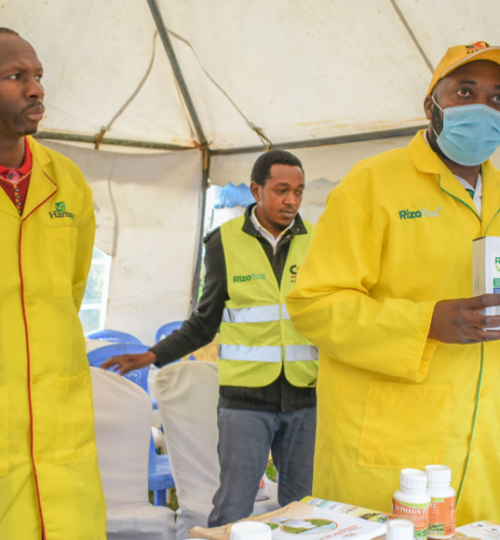

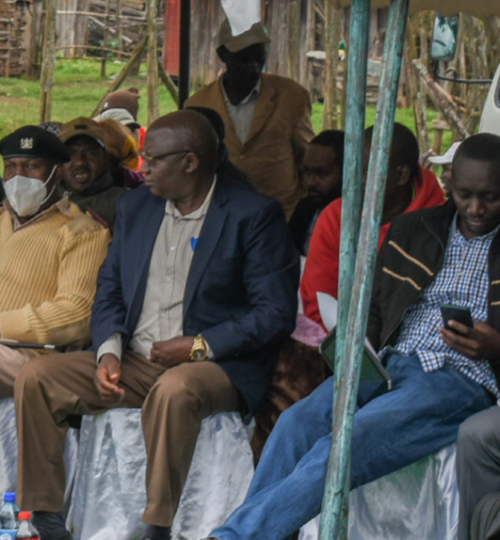
Awards Won
1. Winners of Vijana na Agribiz Competition 2021 held by Kenya Climate Innovation Centre
2. Winner of Codehack 2020 held by Pwani Teknowgalz for our Agri Soko App
Our partners
